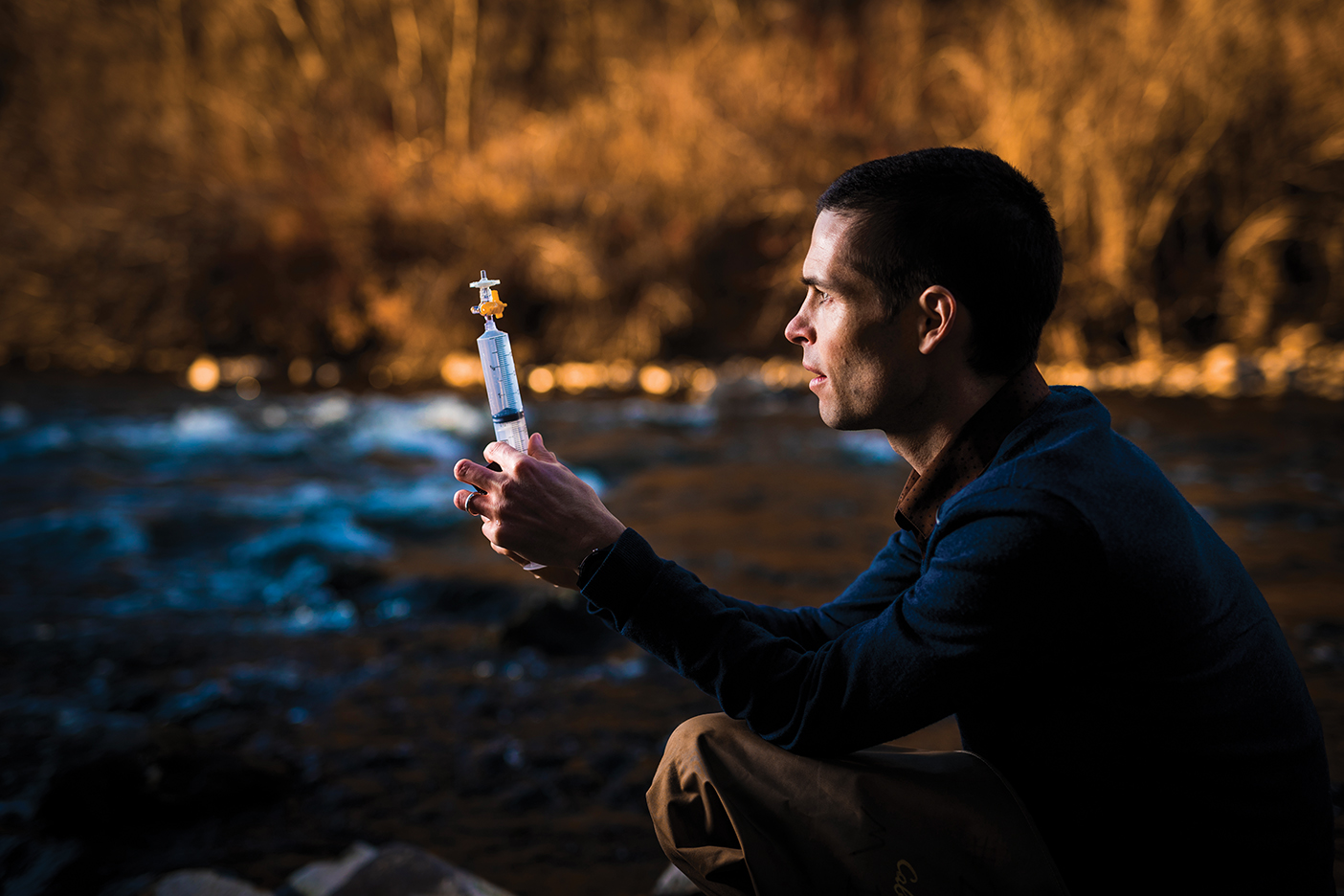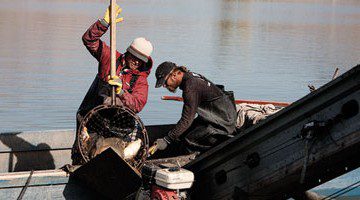BYU plant and wildlife sciences professor leads a citizen-science project to identify causes of algal bloom.

On a sunny morning in March, nearly 100 volunteers from BYU and Provo got their feet wet—literally—in the name of clean water. Armed with bottles, syringes, and filters, volunteers braved icy streams, rivers, and creeks to collect water samples. “It really is a neat experience to go out to the water and really connect with it,” says Rhetta G. Shoemaker (’19), the project coordinator.
The citizen-science project, led by plant and wildlife sciences professor Benjamin W. Abbott, sampled 400 points along Utah Lake and its tributaries. Abbott hopes to use the samples to help identify the cause of annual algal blooms—a toxic layer of lurid green bacteria—which are increasingly appearing in Utah Lake and bodies of water around the world. “Nobody wants to go to a beach where there are toxic algae,” says Abbott.
Blooms can be deadly and costly. In February southern Chilean salmon farmers reported a loss of $8.25 million from the death of 1,600 metric tons of salmon. Last August a chemical haze in southern England, suspected to have arisen from an algal bloom, hospitalized 150 people. And every summer, authorities close much of Utah Lake to recreationists. It’s a global problem hitting most of the world’s lakes and estuaries.
Algal blooms are caused in part by eutrophication, or the overfertilization of aquatic ecosystems caused by nutrients in agricultural and urban runoff. These nutrients, including nitrogen and phosphorus (NP), are common, found in things like fertilizer and human waste. However, reducing NP levels is possible, Abbott says. In a study published in Ecology Letters, Abbott and his colleagues studied eutrophication in France and found that certain areas of land retain nutrients well, while others release them into streams and groundwater.
The key? Natural NP-consuming microorganisms in the soil, which are particularly good at releasing nitrogen into the atmosphere, Abbott says. Keeping soils healthy throughout the watershed can prevent nutrients from being washed into waterways. And he says that conserving natural vegetation along waterfronts and improving water treatment processes can also protect waterways from algal bloom.
“Humankind has become a force of nature,” Abbott says, so much so that our geological time period—the Anthropocene, or the era of the human—is defined by it. “Humans are controlling the composition of the atmosphere and the chemistry of the water.”
The ramifications of the Anthropocene are part of the reason Abbott sponsors events like the Utah Lake sampling project. He hopes such experiences help volunteers appreciate and feel linked to the ecosystem. “Especially as Latter-day Saints, we have the religious background to understand that the earth is a sacred creation that God entrusted to us,” he says. “When we work together, we have really powerful tools to try and solve these problems and better take care of the earth.”












